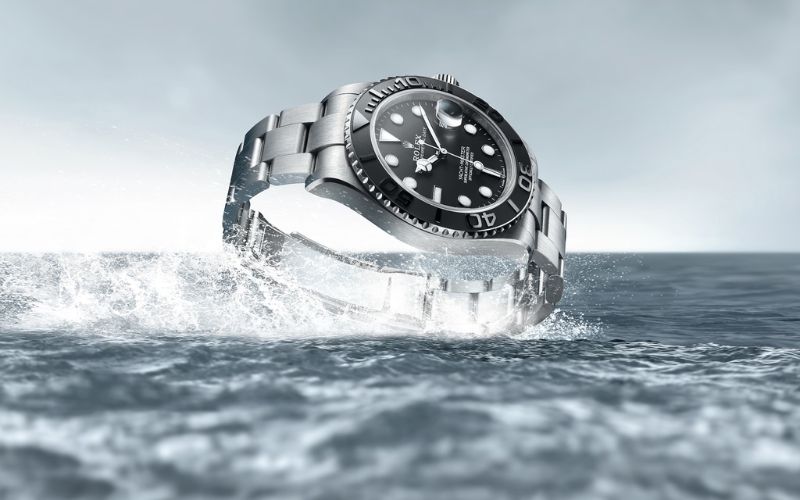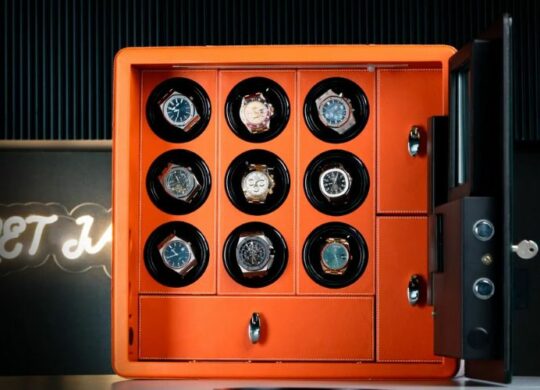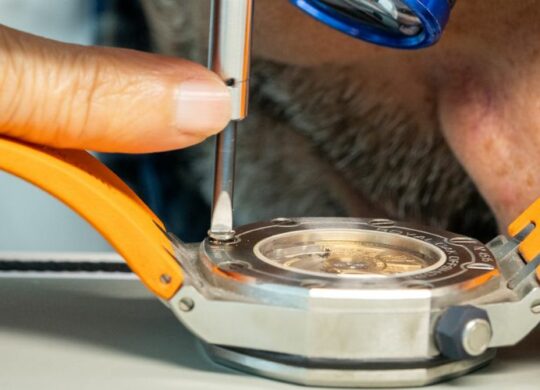Water-Resistant Watches: The More Common Ones
Most of the budget-oriented watches that you buy these days are rated to be water-resistant. These watches are designed to handle light exposure to water. This typically includes splashes from washing hands, rain, or minor accidental water contact. These watches do not give you the freedom to go underwater but give you enough peace of mind that if minor splashes hit them, nothing will go wrong.
The degree of water resistance is indicated in meters (m) or atmospheres (ATM). If you see ATM at the back of your watch, just know that 1 ATM equals to 10 meters of static water pressure.
Let’s take a look at some of the more common water-resistant watch ratings and what are they best used for.
- 30m (3 ATM): These watches are suitable for everyday use and such a rating is usually seen on dress watches.
- 50m (5 ATM): Watches with this type of rating are usually safe to take to the swimming pool and can easily handle rain.
- 100m (10 ATM): More rugged yet budget-oriented watches like G-Shock carry a water resistance rating of 100 meters making them suitable for surfing, swimming, snorkeling, sailing and other water sports.
Waterproof Watches: For the Adventurist
Unlike water-resistant watches, waterproof watches are much more rugged and can be taken for deep water activities. Even though classified as waterproof watches, these watches are not exactly entirely waterproof. Under extreme conditions, the seal on these watches can be compromised. Also, just like water-resistant watches, these watches also have a certain rating to which extent they can be taken underwater. So technically, these are also water-resistant watches but with better specifications.
In order to make these watches more resistant to water pressure, brands often add additional features to these timepieces, such as screw-down crowns and case backs. These watches even have high-quality gaskets installed ensuring the water does not enter the movement and damage it. These features are often found in mid-range and high-end watches like the Omega Seamaster and the Rolex Sea Dweller.
Also Read: Prevent Moisture From Getting Inside a Watch: Tips & Tricks
Why Not Make All Watches Waterproof?
You might be thinking that if waterproof watches are better then why even bother with water-resistant ones, right? It’s not as easy as it sounds. Waterproof watches often need more expensive seals and materials, which is why you wont see these watches at budget price points. Also, these watches require higher maintenance. These timepieces have to be serviced frequently and you need to change the gaskets and seals every few years to make sure the watch remains waterproof.
Water-Resistant or Waterproof: Which one is right for you?
In simple words, water-resistant watches are suitable for light water exposure whereas waterproof watches offer enhanced protection for more adventurous water activities. So it all boils down to your personal preferences and lifestyle. If you are someone who just wears watches to work and occasionally to parties, then a water-resistant watch is more than capable of handling your needs. However, if you do a lot of activities while wearing the watch then it is best to invest in a waterproof watch.





